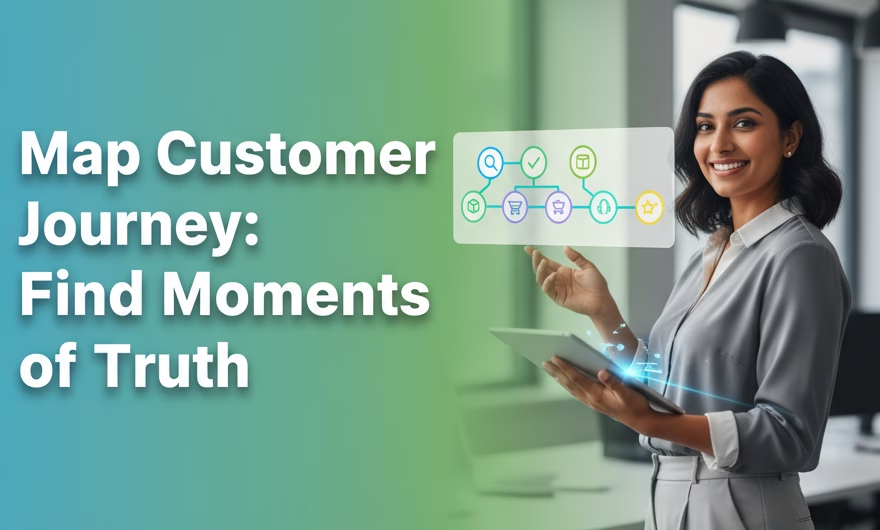1. Hyper-personalization of Customer Engagement
With nearly 71% of customers expecting personalized interactions (McKinsey study), companies use natural language processing (NLP) and machine learning (ML) to deliver highly personalized customer engagement. Chatbots leverage rich customer data history to provide targeted responses and solve queries immediately.
Today’s most effective customer service chatbot features push personalization beyond simple profile lookups. They use intent detection, real-time context, and historical signals to adapt responses, tone, and next best actions for each individual. This creates experiences that feel human and relevant while still being fast, consistent, and scalable.
Capabilities that enable hyper-personalization include:
- Context retention across sessions and channels: Remember preferences, prior purchases, past issues, and conversation history to avoid repetitive questions and accelerate resolution.
- Deep CRM and helpdesk integration: Pull account details, loyalty tiers, warranties, and open ticket status to tailor answers and proactively address related needs.
- Dynamic response generation: Use NLP/ML to format answers in the customer’s preferred style, language, and level of detail, and to adjust tone based on sentiment.
- Real-time recommendations: Suggest the next best action—such as troubleshooting steps, add-on services, or appointment slots—based on behavior and context.
- Sentiment and emotion detection: Recognize frustration or confusion and respond with empathy, slower pacing, or priority escalation to a human agent when needed.
- Multilingual support with locale awareness: Personalize by language, regional norms, and local policies, ensuring clarity and compliance across markets.
- Privacy-first personalization: Respect consent preferences, mask sensitive data, and personalize using approved first-party data to maintain trust and comply with regulations.
As generative AI and retrieval-augmented techniques continue to mature, chatbots can summarize complex account history, surface highly relevant solutions, and learn from feedback loops. The result is faster first-contact resolution and interactions that feel uniquely tailored to the customer.
2. 24*7 Conversation with a Customer Service Chatbot
AI chatbots ensure around-the-clock accessibility with minimal maintenance or monitoring, maintaining 99% uptime. This continuous availability enhances the customer journey and enables opportunities beyond service hours, including auto-generated ticketing, scheduling, and instant alerts.
Round-the-clock support is only valuable if it’s reliable, secure, and consistent across channels. Modern customer service chatbot features are designed to keep conversations flowing seamlessly—no matter the hour—while protecting customer data and providing clear paths to escalation when necessary.
Foundational capabilities for dependable 24*7 conversations include:
- Omnichannel presence: Serve customers on web, mobile apps, messaging apps, social channels, and voice assistants, with consistent context across touchpoints.
- Automated triage and routing: Quickly classify inquiries, route urgent issues for priority handling, and automatically create and update tickets when human assistance is required.
- Resilient infrastructure: Employ autoscaling, failover, and graceful-degradation patterns to handle demand spikes during promotions, outages, or seasonal peaks.
- Human handoff without friction: Transition conversations to agents with full context, transcripts, and customer details so customers never have to repeat themselves.
- Proactive notifications and alerts: Trigger messages for status changes, upcoming appointments, or required actions, reducing inbound contacts and uncertainty.
- Accessibility by design: Support assistive technologies, clear language, and alternative interaction modes (text, voice, rich cards) to serve diverse user needs at any time.
- Security and compliance controls: Protect personally identifiable information (PII) with encryption, redaction, and role-based access, and align with applicable regulations.
Together, these capabilities ensure that customers can get immediate answers, initiate self-service actions, and receive timely updates whenever they need them—without waiting for business hours—while still having a clear path to an empathetic human conversation when required.
3. Scalable Quick Responses to Customer Queries
Many customer queries, such as billing, onboarding, or delivery inquiries, often represent a large volume of calls that can be quickly handled by AI chatbots. By automating responses to these focus issues, businesses can efficiently manage more than half of incoming queries at scale.
Speed and scale are achieved when chatbots pair strong understanding of intent with well-orchestrated workflows. The goal is to shorten time-to-answer and reduce effort for both customers and agents—without sacrificing accuracy or brand voice.
Key features that unlock scalable, fast responses include:
- High-accuracy intent recognition: Use NLP to classify top use cases (order status, returns, billing, onboarding, technical troubleshooting) and immediately present the most relevant path.
- Knowledge base integration and retrieval: Pull verified answers from product guides, policies, and past resolutions to give consistent, up-to-date responses.
- Workflow and form automation: Automate routine tasks like password resets, appointment bookings, plan changes, and refunds using secure forms and APIs.
- Transaction-aware bots: Allow customers to check balances, track shipments, update addresses, or activate services directly within the conversation on WhatsApp Business.
- Smart deflection with transparency: Resolve simpler issues within the bot while clearly indicating when an agent will take over, along with expected response times.
- Queue and load management: Prioritize high-value or time-sensitive requests, provide estimated wait times, and offer call-back or self-service alternatives during peaks.
- Multilingual, real-time translation: Reduce handoffs and delays for global audiences by providing immediate, high-quality translations and localized policies.
- Analytics and continuous improvement: Track containment rate, first-contact resolution, handle time, and customer satisfaction to identify and close knowledge gaps.
When these features work in concert, chatbots can address a majority of repetitive inquiries at machine speed, reserve agents for complex scenarios, and ensure that every interaction advances the customer toward a resolution—whether through instant self-service or swift escalation.
These features empower companies to provide expectational customer service by improving response times, personalizing interactions, and ensuring availability at all times.
Conclusion
Organizations that focus on these three pillars—hyper-personalization, 24*7 availability, and scalable quick responses—build service experiences customers remember for the right reasons. By combining strong NLP/ML, deep system integrations, and responsible governance, you can deliver empathetic, on-brand support at scale, reduce operational load on agents, and continuously improve outcomes with real-world feedback. The result is a service operation that is faster, smarter, and always there when your customers need it most.




